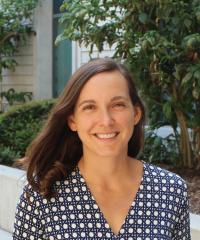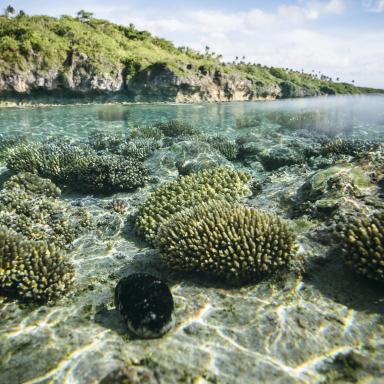
For 2 days (occasionally), some of the best minds in our profession come to Santa Barbara for the Occasional Workshop in Environmental and Resource Economics. The papers and discussions are first rate and the atmosphere is relaxed. This year’s Occasional, organized by emLab, was no different.
Memorable moments from this year’s program include:
- David Molitor’s talk about the health impacts of wildfire smoke at the very moment a wildfire smoke plume arrived, temporarily making Santa Barbara the most polluted county in the U.S.
- Next-level discussions by Matt Gibson, who provided first-stage results for the paper he discussed; Nick Kuminoff, who brought administrative data to his discussion; and Marshall Burke, who pointed out that the paper he discussed had more words than Steinbeck’s Of Mice and Men.
- An actual egg timer for the egg-timers.
Speaking of egg-timers: We had a fantastic set of 5-minute egg-timer presentations by graduate students. The buzzing egg timer lent an air of suspense to the presentations and not a single presenter went over time. In case you were worried that we were letting graduate students off the hook with short talks, the 5-minute presentation is actually the hardest format in our profession. If you can communicate a paper effectively in 5 minutes, you can do it in any setting.
To encapsulate the energy of the egg-timer session and share the interesting work of current PhD students, many of which are currently on the job market (!), here’s an even shorter summary of the egg-timer presentations.
1. Environmental regulators have to keep track of polluters. Tihitina Andargeshows that the EPA often does not know which firms are regulated under the Clean Air Act. Across the Mississippi River Basin, water pollution increases as fewer polluting firms are known the EPA.
2. Can government-backed flood insurance lead to greater flood risk? Dan Szmurlo shows that flood insurance subsidies under U.S. National Flood Insurance Program generated moral hazard by inducing more building in flood-risk areas.
3. How do we balance climate and nuclear power concerns, especially when nuclear provides carbon-free baseload electricity? Stephen Jarvis turns to Germany’s recent experience with phasing out nuclear power, finding it led to greater operating costs, more GHG emissions, and more local pollution.
4. Climate change will change both the mean and variance of cereal yields, both of which should affect crop choice and prices. Fabien Forge thinks through these channels using a trade model and shows that most of the welfare impacts of climate change will come from changes in mean yields.
5. Why don’t households adopt energy efficient technology, particularly in developing economies? Susanna Berkouwer runs an RCT with cookstoves in Kenya showing that it isn’t because the technology has low benefits or that households are inattentive to energy savings, but rather because households face credit constraints.
6. Do environmental markets cause environmental injustice? Danae Hernandez-Cortes finds the answer is “no” for California’s cap-and-trade program. Rather, the program narrowed the pollution exposure gap between disadvantaged and other communities. Generating this result requires running a transport model involving 11 million pollution trajectories.
7. Privatizing land tenure has big effects in Southern Chile, where locations that privatized earlier see greater investments in agriculture, less native vegetation loss due to overgrazing, and even fewer children per family. Felipe Jordán sums it up: tenure reform is important for sustainable agriculture.
8. Does regulatory uncertainty lead to more innovation or more lobbying? Andy Hultgren says both, and backs it up with evidence showing that when scientists discover that a chemical is linked to human health, both R&D investments and lobbying expenditures go up.
9. Local property tax revenue from new power plants or other dirty industries might help offset some of the local environmental damages. Sam Krumholzprovides evidence for this tradeoff, showing that school funding increases when a new power plant comes to town, but that local governments are more likely to oppose them coming in the first place when school finance reforms limit the local benefits generated through taxation.
10. Do temperature shocks matter even when they are not all that shocking? Juliana Helo uses data from Colombia to show us that the answer is yes; even at very narrow temperature ranges — characteristics of the tropics — anomalously hot or cold months kill, and do so for different reasons than in temperate locations (according to the existing literature, which comes almost exclusively from temperate locations), namely infectious diseases and respiratory illness.
11. Killer cicadas! Or more precisely, as Charles Taylor shows, the pesticides farmers use to kill cicadas every 13- or 17-years result in spikes in infant mortality, declines in test scores, and increases in school drop out rates in the geographic locations where tree crops are most susceptible.
It is always inspiring to learn about what emerging environmental and resource economists are working on. The future is bright. But watch out for the cicadas.




